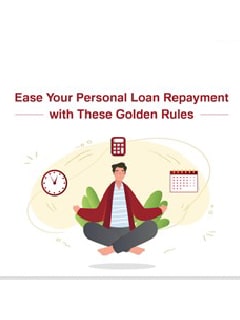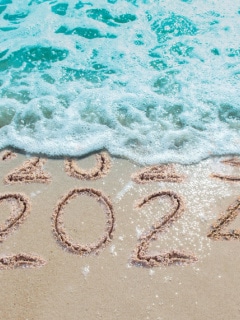CKYC Registry
-
Customer Service Contact us Service request Locate a branch
Find all the help you need
Scan the QR, get our app, and find help on your fingertips

Help CenterSupport topics, Contact us, FAQs and more
-
Login
Are you ready for an upgrade?
Login to the new experience with best features and services
-
Login
Are you ready for an upgrade?
Login to the new experience with best features and services
- Accounts
-
Deposits
IDFC FIRST Bank Deposits
View all Deposits -
Loans
IDFC FIRST Bank Loans
View all Loans - Wealth & Insure
-
Payments
IDFC FIRST Bank Payments
View all Payments -
Cards
IDFC FIRST Bank Cards
View all Cards - Blogs
- Corporate Account
-
Cash Management Services
IDFC FIRST Bank Cash Management Services
View all Cash Management Services - Supply Chain Finance
-
Corporate Lending
IDFC FIRST Bank Lending
View all -
Treasury
IDFC FIRST Bank Treasury
See more details - NBFC Financing
Support topics, Contact us, FAQs and more
- IDFC FIRST Bank Accounts
-
Savings Account
-
Corporate Salary
Account -
Senior Citizens
Savings Account -
First Power
Account -
Current Account
-
NRI Savings
Account -
TASC Institutional
Account -
Savings Account
Interest Calculator
- IDFC FIRST Bank Deposits
-
Fixed Deposit
-
Recurring Deposit
-
NRI Fixed Deposit
-
Safe Deposit Locker
-
FD Calculator
-
RD Calculator
- IDFC FIRST Bank Loans
-
Personal Loan
-
Consumer Durable
Loan -
Home Loan
-
Business Loan
-
Professional Loan
-
Education Loan
-
New Car Loan
-
Pre-owned Car Loan
-
Two Wheeler Loan
-
Pre-owned Two
Wheeler Loan -
Commercial Vehicle
Loan -
Gold Loan
-
Loan Against Property
-
Loan Against Securities
-
Easy Buy EMI card
-
Personal Loan
EMI Calculator -
Education Loan
EMI Calculator -
Home Loan
EMI Calculator
- IDFC FIRST Bank Wealth & Insure
-
FIRST Select
-
FIRST Wealth
-
FIRST Private
-
Mutual Funds
-
Sovereign Gold Bond
-
Demat Account
-
Term Insurance
-
Life Insurance
-
Health Insurance
-
General Insurance
-
Bonds
-
Loan Against
Securities -
Portfolio Management
Service
- IDFC FIRST Bank Payments
-
FASTag
-
Credit Card
Bill Payments -
UPI
-
Funds Transfer
-
Forex Services
-
Pay Loan EMI
- IDFC FIRST Bank Cards
-
Ashva :
Metal Credit Card -
Mayura :
Metal Credit Card -
FIRST Millennia
Credit Card -
FIRST Classic
Credit Card -
FIRST Select
Credit Card -
FIRST Wealth
Credit Card -
FIRST WOW!
Credit Card -
Deals
-
Debit Cards
-
Co-branded Cards
-
Credit Card
EMI Calculator -
FIRST Corporate
Credit Card -
FIRST Purchase
Credit Card -
FIRST Business
Credit Card
- Premium Metal Credit Cards
-
AshvaLifestyle1% Forex₹2,999
-
MayuraLifestyleZero Forex₹5,999
-
FIRST PrivateInvite Only
- Best for travellers
-
MayuraZero ForexMetal₹5,999
-
Ashva1% ForexMetal₹2,999
-
FIRST WOW!Zero ForexTravelLifetime Free
-
FIRST SWYPTravel OffersEMI₹499
-
FIRST Select1.99% ForexLifestyleLifetime Free
-
FIRST Wealth1.5% ForexLifestyleLifetime Free
-
Club VistaraTravelLifestyle₹4,999
-
IndiGo IDFC FIRST Dual Credit CardTravelLifestyle₹4,999
- Max benefits, Free for life
-
FIRST Classic10X RewardsShoppingNever Expiring Rewards
-
FIRST Millennia10X RewardsShoppingNever Expiring Rewards
-
FIRST Select10X RewardsLifestyle1.99% Forex
-
FIRST Wealth10X RewardsLifestyle1.5% Forex
-
FIRST WOW!RewardsTravelZero Forex
-
LIC ClassicRewardsInsuranceShopping
-
LIC SelectRewardsInsuranceShopping
- Reward Multipliers
-
AshvaLifestyleMetal₹2,999
-
MayuraLifestyleZero Forex₹5,999
-
FIRST ClassicNever Expiring RewardsShoppingLifetime Free
-
FIRST MillenniaNever Expiring RewardsShoppingLifetime Free
-
FIRST SelectNever Expiring RewardsLifestyleLifetime Free
-
FIRST WealthNever Expiring RewardsLifestyleLifetime Free
- Rewards & Credit on UPI
-
FIRST Power+FuelUPI₹499
-
FIRST PowerFuelUPI₹199
-
FIRST EA₹NVirtual1% Cashback₹499
-
FIRST DigitalVirtualUPI₹199
-
IndiGo IDFC FIRST Dual Credit CardUPITravelDual cards
- Fuel and Savings
-
FIRST PowerRewardsUPI₹199
-
FIRST Power+RewardsUPI₹499
-
LIC ClassicRewardsInsuranceShopping
-
LIC SelectRewardsInsuranceShopping
- Express and Flaunt
-
AshvaMetal1% Forex₹2,999
-
MayuraMetalZero Forex₹5,999
-
FIRST SWYPEMIOfferMAX₹499
-
FIRST MillenniaRewardsShoppingLifetime Free
- FD Backed rewarding Credit Cards for all
-
FIRST EA₹NVirtualCashback₹499
-
FIRST WOW!Zero ForexTravelLifetime Free
-
CreditPro Balance TransferTransfer & SaveReduce InterestPay Smartly
- IDFC FIRST Bank NRI Forex Solutions
-
Send money to India-Wire transfer
-
Send money to India-Digitally
-
Send money abroad
-
Max Returns FD (INR)
- IDFC FIRST Bank MSME Accounts
-
Platinum Current
Account -
Gold
Current Account -
Silver Plus
Current Account -
Merchant Multiplier
Account -
Agri Multiplier
Account -
TASC Institutional
Account -
Dynamic Current
Account -
World business
Account -
First Startup
Current Account
- IDFC FIRST Bank Business Loans
-
Business Loan
-
Professional Loan
-
Loan Against Property
-
Business Loan for Women
-
Working Capital Loan
-
Construction Equipment Loan
-
Machinery Loan
-
Healthcare Equipment Loan
- IDFC FIRST Bank Business Solutions
-
Payment Solutions
-
Tax Payments
-
Doorstep Banking
-
Point of Sale (POS)
-
Escrow Accounts
-
NACH
-
Payment Gateway
-
UPI
-
Virtual Accounts
-
As per amendment in the Income Tax Rules, PAN or Aadhaar are to be mandatorily quoted for cash deposit or withdrawal aggregating to Rupees twenty lakhs or more in a FY. Please update your PAN or Aadhaar. Kindly reach out to the Bank’s contact center on 1800 10 888 or visit the nearest IDFC FIRST Bank branch for further queries.
-
-
Most Searched
Sorry!
We couldn’t find ‘’ in our website
Here is what you can do :
- Try checking the spelling and search
- Search from below suggestions instead
- Widen your search & try a more generic keyword
Suggested
Get a Credit Card
Enjoy Zero Charges on All Commonly Used Savings Account Services
Open Account Now

The term POS stands for Point of Sale. It is the place where a retail transaction takes place i.e., where a customer makes a payment for goods or services. POS systems are used to administer retail sales and process payments. These systems consist of both software and hardware components like cash registers, computers, and smartphones.
POS systems
Banking POS systems facilitate debit card and credit card transactions for merchants. They connect the bank's network to the merchant's terminal so payments can be processed. The money is deducted directly from the customer's account and credited to the merchant's account.
Key features of a POS system
A point-of-sale system is a combination of software and hardware that allows businesses to conduct sales, accept payments, issue receipts, among other functions. The core functions of a POS system include:
1. Tracking sales
POS systems record every sale to maintain an updated inventory and accounts receivable. They can generate reports for reconciling cash registers and tracking profits.
2. Processing payments
The primary function of a POS system is to accept and record customer payments. They accept different payment types like cash, credit cards, and debit cards.
3. Issuing receipts
POS systems immediately generate receipts for purchases. They can email receipts to customers as well.
4. Product management
Many POS systems offer product management features like adding new items, updating prices, recording item details, and monitoring inventory levels.
5. Customer management
Some POS systems also track customer details and purchasing habits to build a customer database for loyalty programs and marketing.
6. Reporting
POS systems provide several reporting features to gain insights into sales, profits, customers, best-selling products, employee performance, and other metrics.
READ MORE
POS transaction flow
A basic POS transaction flow goes through several steps:
1. Sales initiation
This begins when a customer brings an item to the checkout counter or taps/swipes their card to indicate they want to make a purchase.
2. Identification of item
The item is identified either by scanning its barcode or manually entering its product code into the POS system. The details of the item are displayed on the screen.
3. Calculation of bill
The POS system calculates the total bill including tax, discounts, and loyalty points as applicable. The total amount payable is displayed to the customer.
4. Payment
The customer proceeds to make payment through their preferred modes such as cash, card, mobile wallet, or other options. The payment is recorded in the system.
5. Issuance of receipt
A receipt is generated and handed to the customer or emailed to them as proof of their purchase.
6. Updating accounts
The POS system automatically updates inventory, loyalty points, sales, tax collected and other metrics. The merchant's account is credited with the payment amount.
Business benefits of using POS systems
A POS system speeds up the checkout process and sales transactions. It eliminates the need for manual price calculations and produces receipts and bills accurately. This results in shorter queues and wait times which improves customer satisfaction.
A POS system automatically updates inventory levels after each sale. It can also generate purchase orders, low-stock alerts, and reports on sales trends and top products. This makes it easier to identify fast-moving and slow-moving products and optimise inventory.
POS systems capture customer details, contact information, and purchase history which can be used to develop targeted marketing campaigns and loyalty programs. This helps to boost customer retention and repeat sales.
Furthermore, most POS systems offer integrated card payment options so merchants can accept debit cards, credit cards and mobile wallets. This means quick electronic payments, reduced chances of errors, and automatic bank reconciliation.
Finally, they can be used to generate sales reports, tax reports, and other analytics to gain insights into business performance. Managers and owners can analyse reports and metrics to make better decisions about pricing, profit margins, and growth strategies.
POS systems minimise the margin of error with automated processes for entering item details, calculating totals, deducting inventory accurately and securely recording sales and payments data. Human errors like miscalculations, inventory mismatches, and fraud are avoided.
Most POS systems can be integrated with other software like accounting, payroll, customer relationship management and e-commerce platforms. This eliminates the need for double data entry and ensures a streamlined flow of information across the systems.
All in all, POS systems significantly reduce the time spent on manual processes. It also minimizes paper usage and additional costs from payment processing and invoicing. This generates considerable cost and time savings for the business in the long run.
In conclusion
POS systems offer numerous benefits such as increased efficiency, robust inventory management, improved customer experience, integrated payments, data-driven insights, reduced errors, mobility, software integrations, and cost and time savings. Retail businesses can benefit immensely by optimising operations and boosting revenue.
Disclaimer
The contents of this article/infographic/picture/video are meant solely for information purposes. The contents are generic in nature and for informational purposes only. It is not a substitute for specific advice in your own circumstances. The information is subject to updation, completion, revision, verification and amendment and the same may change materially. The information is not intended for distribution or use by any person in any jurisdiction where such distribution or use would be contrary to law or regulation or would subject IDFC FIRST Bank or its affiliates to any licensing or registration requirements. IDFC FIRST Bank shall not be responsible for any direct/indirect loss or liability incurred by the reader for taking any financial decisions based on the contents and information mentioned. Please consult your financial advisor before making any financial decision.
The features, benefits and offers mentioned in the article are applicable as on the day of publication of this blog and is subject to change without notice. The contents herein are also subject to other product specific terms and conditions and any third party terms and conditions, as applicable. Please refer our website www.idfcfirstbank.com for latest updates.






















